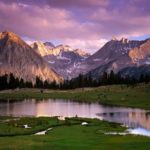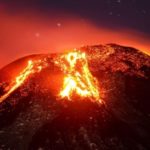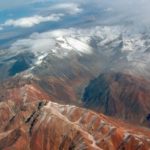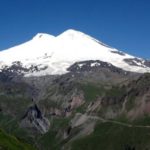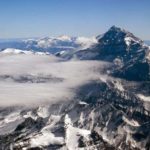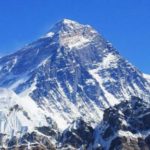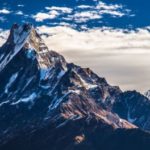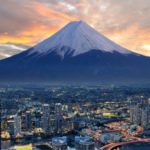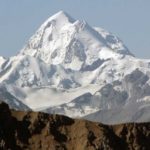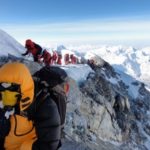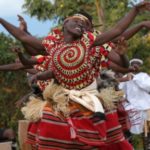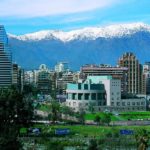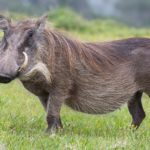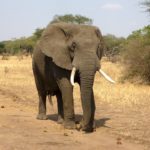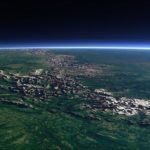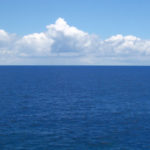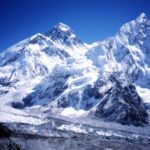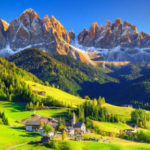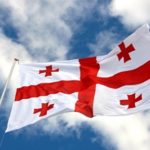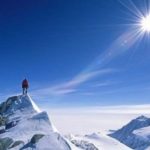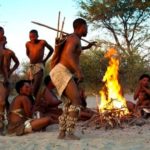Kilimanjaro
 Kilimanjaro is the highest mountain in Africa. The ancients called it the “Crown of Tanzania”, although in fact it is a stratovolcano, besides the highest in the world. By structure, Kilimanjaro is a ridge of three volcanoes. The lowest and oldest of them is the Shira, with a height of 3810 meters. The next middle is Mawenzie. And the youngest and highest volcano Kibo with the peak of Uhuru overshadows its cousins not only with its height of 5895 meters above sea level, but also with its size.
Kilimanjaro is the highest mountain in Africa. The ancients called it the “Crown of Tanzania”, although in fact it is a stratovolcano, besides the highest in the world. By structure, Kilimanjaro is a ridge of three volcanoes. The lowest and oldest of them is the Shira, with a height of 3810 meters. The next middle is Mawenzie. And the youngest and highest volcano Kibo with the peak of Uhuru overshadows its cousins not only with its height of 5895 meters above sea level, but also with its size.
Kilimanjaro volcanoes or peaks consist of several layers of hardened lava, ash and tephra. According to scientists, this ridge was formed more than a million years ago. According to scientists, the last peak of Uhuru is covered with a cap of ice and snow, which has been preserved on it since the ice age. This is despite the fact that the equator is only 320 kilometers away.
The volcano attracts many tourists who want to test their strength and their number is growing every year. For those who do not want to climb the mountain itself, Serengeti Park is opened in the immediate vicinity of the mountain, where you can observe lush tropical vegetation, as well as many animals – giraffes, elephants, lions and some species of rodents.
Volcano-Kilimanjaro-Legends-o-Kilimanjaro-2
By the way, Kilimanjaro never erupted, only landslides occurred, but clouds of gas are regularly seen on the top of Kibo. This means that the peak may collapse, which in turn will cause an eruption.
Not only that, the ice and snow on the top of the mountain are currently melting. Someone explains this as global warming, someone as a lack of precipitation necessary for the formation of a snow cap. Some scientists even believe that the volcano gradually wakes up and, as a result, heats up. None of the trends has yet been proven.
From the history of the volcano
It should be noted that the name Kilimanjaro in Swahili means “mountain that sparkles.” This name was not given in vain – the top of the volcano is covered with a hat of melting snow, which sparkles brightly under the African sun. In ancient times, the tribes that lived around the mountain did not know anything about snow and believed that the top of the volcano was covered with silver. After several brave souls explored the peak, the mountain was given another name – “The abode of the god of cold.”
The volcano became known to the European community at the end of the 19th century thanks to German pastor Johannes Rebman. And 20 years after that, the first conqueror, Count Samuel Teleki, climbed Kilimanjaro.
It was Teleki who became the first person to reach the snow line on Kilimanjaro at an altitude of 5300 m and it took him a lot of time. Then he made an attempt to climb Mount Kenya.
Well, and in the wake of it, in 1889, the German traveler Hans Meyer and the Austrian mountain climber Ludwig Purtscheller conquered the roof of Africa.
Many legends are associated with Kilimanjaro, most of which have survived to this day. The local population believes that the gods live on the top of the volcano, and dwarf dwarves settled in caves and ravines, who hunt and collect berries and roots. In addition to them, evil spirits live on the mountain, which, according to the local population, control the weather on Kilimanjaro.
According to another legend: in the vicinity of Kilimanjaro, the Vachagga people lived, who talked about the two brothers Mawenzi and Kibo.
The elder Mawenzie made fire for his pipe from his younger brother. Since the Vachagga tribe appeared in the area of the mountain not so long ago, scientists suggest that this means the recent activity of Kilimanjaro.
Kilimanjaro Tourism
Climbing Kilimanjaro begins with a search in the nearby town of Moshi for a travel agency accredited in Kilimanjaro National Park and acquiring a tour from them. The cost of the tour ranges from $ 1,500 to $ 4,000 and depends on the number of participants and the chosen route. As an accompaniment, agencies offer professional mountain guides, porters and even cooks. The duration of the climb is usually 5-8 days. The best time for such a trip is from December to February or from June to October. One of the best companies offering climbing Kilimanjaro is, without a doubt, Altezza Travel.
At other times, the rainy season takes place on the territory of the volcano. It is especially pronounced in this area. However, even for those who hit the volcano at this time, there is reason to be glad. In the rainy season, one can observe a unique phenomenon – rising clouds covering the top of the mountain.
It is noteworthy that some of these trails are only for climbing, one of them is only for descent, and only the Marangu trail is designed to travel in both directions.

